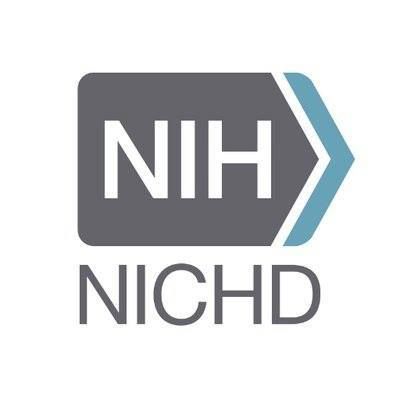预约演示
更新于:2025-05-07
Delayed Puberty
青春期延迟
更新于:2025-05-07
基本信息
别名 DELAYED PUBERTY、Delay in sexual development AND/OR puberty、Delay in sexual development AND/OR puberty (disorder) + [34] |
简介 The lack of development of SEXUAL MATURATION in boys and girls at a chronological age that is 2.5 standard deviations above the mean age at onset of PUBERTY in a population. Delayed puberty can be classified by defects in the hypothalamic LHRH pulse generator, the PITUITARY GLAND, or the GONADS. These patients will undergo spontaneous but delayed puberty whereas patients with SEXUAL INFANTILISM will not. |
关联
9
项与 青春期延迟 相关的药物靶点 |
作用机制 AR激动剂 |
原研机构- |
非在研适应症- |
最高研发阶段批准上市 |
首次获批国家/地区- |
首次获批日期1999-07-12 |
靶点 |
作用机制 AR激动剂 |
原研机构 |
最高研发阶段批准上市 |
首次获批国家/地区 美国 |
首次获批日期1995-09-29 |
23
项与 青春期延迟 相关的临床试验NCT06931912
Growth Evaluation, Health Promotion, and Clinical Management in Children and Adolescents With Thalassemia
There are nearly 300,000 patients with severe or intermediate thalassemia in China. Growth retardation is the most significant health issue for children and adolescents with transfusion-dependent thalassemia (TDT), placing a substantial economic burden on their families and a serious social strain on the labor force. Investigating the growth and development of these children and adolescents, and establishing targeted intervention plans, holds significant social value for public health practice.
1. To screen and identify pediatric patients with growth problems by conducting growth and development assessments in high-incidence areas of China, including physical development, endocrine function, nutritional status, brain function and lifestyle behaviors.
2. Implement the MENBS clinical interventions for pediatric patients with growth problems, concentrating on the following areas:
* Monitor: Continuously monitor health-related indicators through regular follow-up.
* Education: Provide health education to improve the cognition of patients and their families.
* Nutrition: Assess patients' nutritional risks and develop personalized diet plans.
* Behavior: Recommend appropriate exercise plans to promote physical development.
* Support: Conduct home visits, offer free clinics and establish a support network.
3. Repeat growth assessment for pediatric patients with growth problems after 1-year clinical interventions.
4. Evaluate the effectiveness of MENBS interventions by comparing changes in growth and development indicators.
1. To screen and identify pediatric patients with growth problems by conducting growth and development assessments in high-incidence areas of China, including physical development, endocrine function, nutritional status, brain function and lifestyle behaviors.
2. Implement the MENBS clinical interventions for pediatric patients with growth problems, concentrating on the following areas:
* Monitor: Continuously monitor health-related indicators through regular follow-up.
* Education: Provide health education to improve the cognition of patients and their families.
* Nutrition: Assess patients' nutritional risks and develop personalized diet plans.
* Behavior: Recommend appropriate exercise plans to promote physical development.
* Support: Conduct home visits, offer free clinics and establish a support network.
3. Repeat growth assessment for pediatric patients with growth problems after 1-year clinical interventions.
4. Evaluate the effectiveness of MENBS interventions by comparing changes in growth and development indicators.
开始日期2024-12-01 |
申办/合作机构- |
ISRCTN44496480
Investigating the physiological hormonal response to kisspeptin in delayed puberty
开始日期2023-08-04 |
申办/合作机构 |
CTR20223150
十一酸睾酮软胶囊在健康绝经后女性受试者中单中心、随机、开放、单次给药、两制剂、四周期、完全重复交叉餐后状态下的生物等效性试验
以浙江医药股份有限公司新昌制药厂生产的十一酸睾酮软胶囊(规格:40mg)为受试制剂,以持证商为N.V.Organon,生产厂家为Catalent France Beinheim S.A.的十一酸睾酮软胶囊(商品名:安特尔®,规格:40mg)为参比制剂,按生物等效性试验的相关规定,比较十一酸睾酮软胶囊在中国健康绝经后女性受试者体内的药代动力学行为,评价两种制剂的生物等效性。同时,评价健康绝经后女性受试者单次餐后口服十一酸睾酮软胶囊受试制剂和参比制剂后的安全性。
开始日期2022-12-14 |
申办/合作机构 |
100 项与 青春期延迟 相关的临床结果
登录后查看更多信息
100 项与 青春期延迟 相关的转化医学
登录后查看更多信息
0 项与 青春期延迟 相关的专利(医药)
登录后查看更多信息
2,163
项与 青春期延迟 相关的文献(医药)2025-06-01·The Journal of Nutritional Biochemistry
Aspartame consumption linked to delayed puberty and mitochondrial Dysfunction: Evidence from human and animal studies
Article
作者: Lin, Chia-Yuan ; Hsieh, Rong-Hong ; Lin, Yu-Fang ; Nacis, Jacus S ; Chen, Yang-Ching ; Wang, Zih Ling ; Hsu, Shih-Yuan
2025-04-01·Journal of Molecular Endocrinology
Kisspeptin isoforms: versatile players in reproduction and beyond
Review
作者: Chakraborty, Aishwarya P. ; Banerjee, Antara A.
2025-03-27·European Journal of Endocrinology
Deleterious variants in intolerant genes reveal new candidates for self-limited delayed puberty
Article
作者: Kentistou, Katherine A ; Grinspon, Romina P ; Perry, John R B ; He, Wen ; Rey, Rodolfo A ; Meriq, Veronica ; Cellin, Laurana P ; Dantas, Naiara C B ; Ong, Ken K ; Costa, Elaine Maria F ; Latronico, Ana Claudia ; Rezende, Raíssa C ; Barroso, Priscila S ; Chan, Yee-Ming ; Merino, Paulina ; Kaisinger, Lena R ; Andrade, Nathalia L M ; Schafer, Evan C ; Dunkel, Leo ; Seminara, Stephanie B ; Jorge, Alexander A L ; Howard, Sasha R ; Lerario, Antonio M ; Giannakopoulos, Aristeides ; P S Quedas, Elisangela
9
项与 青春期延迟 相关的新闻(医药)2025-04-07
·梅斯医学
35岁的林女士(化名)从青春期开始就饱受“诡异出血”困扰——皮肤上零星散布着蓝紫色“橡皮痣”,按压可缩小,松手又复原;更折磨的是反复便血,血色暗红如“陈年铁锈”,长期贫血让她面色苍白如纸,连爬楼梯都喘不上气。十年间,她被误诊为“痔疮”“溃疡性结肠炎”,直到肠镜探入时医生惊呆:肠道内壁布满蓝黑色血管瘤,像一串串“葡萄”悬挂在黏膜上,轻微触碰便渗血不止。基因检测发现TEK基因突变,确诊为蓝色橡皮疱痣综合征(BRBNS)——一种基因缺陷导致血管“疯狂发芽”的罕见病!什么是蓝色橡皮疱痣综合征蓝色橡皮疱痣综合征(blue rubber bleb nevus syndrome,BRBNS),皮肤科称蓝色橡皮疱样痣综合征,该病是一种罕见的几乎累及全身的血管发育异常症候群,以皮肤和消化道多发的不规则静脉畸形为主要特征,其他部位如肌肉、脊柱、中枢神经系统、眼、腮腺、脊柱、肾、肺也会受累,是一种常染色体显性遗传性疾病。临床表现1. 皮肤表现皮肤血管瘤是BRBNS最常见表现,常见于上肢和躯干,形态多样,典型为“橡皮样结节”,部分呈蓝黑色或蓝色斑疹,大多在婴幼儿期出现。多数无症状,常因其他系统症状就诊时被发现。研究显示,78%~94.8%患者有皮肤病变。2. 消化道表现胃肠道为常见累及部位,可从口腔至肛门均受影响,尤以小肠多见。约77.2%患者有胃肠道血管瘤,其中69.2%因出血就诊,11.4%并发肠梗阻或肠套叠。临床上应警惕小肠病变,胃肠镜检查阴性者应考虑胶囊或小肠镜进一步评估。3. 其他部位除皮肤和胃肠道外,还可累及肌肉、脊柱、中枢神经系统、眼、腮腺、肾、肺等。大多无症状,部分因压迫或出血引起不适,如疼痛等。4. 伴发症状因消化道慢性出血,可致贫血,表现为乏力、头晕、食欲差等。部分患者可出现癫痫、肩背痛、吞咽困难、慢性咳嗽等非典型症状,甚至伴生长迟缓和青春期延迟,最重者血红蛋白低至21 g/L。诊断BRBNS的诊断主要依赖皮肤和/或胃肠道血管瘤的临床表现,以及组织学上的海绵状或毛细血管性血管瘤特征。内镜医师的经验对提高诊断准确性至关重要。大多数患者皮肤病变出现较早,但确诊往往延迟数年。胃肠道血管瘤常因显性或隐性出血引发黑便、腹痛等症状而就诊,部分可并发肠套叠。病变常早已存在,但症状反复、迁延,容易漏诊。CT、MRI、超声、PET/CT及内镜可辅助发现内脏病变,但并非常规检查手段,因此确诊往往较晚。多项病例总结显示,皮肤病变通常早于胃肠道病变出现。因此,对于全身多处血管瘤的患者,建议尽早进行系统评估,特别是消化内镜检查,以便及时发现内脏受累,防止严重并发症发生。治疗目前BRBNS尚无统一治疗方案,治疗以缓解症状、控制并发症为主,具体措施取决于病变部位及严重程度。大多数皮肤病变无症状,通常不需治疗;胃肠道和其他内脏病变则需积极干预。治疗方式主要包括内镜治疗、药物治疗及其他辅助方法。1. 内镜治疗主要用于控制胃肠道血管瘤出血,是关键的治疗手段。常用技术包括硬化剂注射、电凝术、套扎术、内镜黏膜剥离术等,创伤小、疗效确切。由于病灶常多发、复发,需多次治疗。多项个案研究表明,内镜治疗安全有效,能显著减少出血和相关并发症。2. 药物治疗传统药物如糖皮质激素、普萘洛尔、沙利度胺疗效有限。近年来,mTOR抑制剂西罗莫司在控制血管瘤生长及出血方面展现良好前景。文献报道其可显著缩小血管瘤、减少出血、改善贫血,提高生活质量,有望成为潜在治疗选择。3. 其他治疗外科手术适用于内镜治疗效果不佳或病灶广泛者,可行病变肠段切除。部分皮肤病变如影响美观或功能者可考虑激光治疗,如980 nm激光表现出良好疗效。此外,患者常因反复出血出现严重贫血,需对症支持,包括补铁、输血等措施。参考资料:1.隆琦,马鸣,陈洁.小儿蓝色橡皮疱痣样综合征一例[J].中华儿科杂志, 2013,51:152–153.2.王艳芝,杨云生,蔡逢春,等.蓝色橡皮大疱痣综合征34例临床分析[J].中华消化杂志, 2012,32:723–726.3.Deshpande GA , Samarasam I , George SV ,et al. Blue rubber bleb nevus syndrome: a rare cause of chronic gastrointestinal bleed in adults[J]. Singapore Med J, 2014,55(11):e175-176. DOI: 10.11622/smedj.2014164 .来源 | 梅斯医学编辑 | wanny神经系统罕见病交流群↓点击下方“阅读原文”,下载梅斯医学APP吧!
2025-03-26
·梅斯医学
3岁的男孩豆豆(化名)从1岁起就成了“水桶娃”——每天狂喝6升水,尿布两小时就湿透,半夜哭闹要喝水,家人以为他“天生爱喝水”。可随后他接连骨折三次:翻身压到手臂骨折、学走路崴脚骨折,甚至拍后背哄睡都能拍断肋骨!X光片显示他的骨头像“被虫蛀空的朽木”,骨密度比80岁老人还低。
眼科医生用裂隙灯检查时,发现豆豆的角膜上布满“星尘”般的胱氨酸结晶,肾脏B超显示双肾弥漫性钙化,基因检测揪出罪魁祸首——CTNS基因突变,确诊为胱氨酸贮积症!一种因细胞“垃圾处理站”故障,胱氨酸结晶“填满”全身器官的罕见遗传病!
1
常染色体隐性遗传病
胱氨酸贮积症是一种常染色体隐性遗传病,是由编码溶酶体膜上的胱氨酸转运蛋白(site-directed mutagenesis)的CTNS基因突变引起,当该基因发生突变时,溶酶体中的胱氨酸便无法被正常转运到细胞质,从而在全身各处的细胞溶酶体内异常蓄积导致发病。
2
临床表现及分型
胱氨酸贮积症分为婴儿型(肾病型)、迟发型(青少年型)和成人型(良性或眼型)。婴儿型为最常见且最严重,表现为蛋白尿、肾功能恶化和终末期肾病。肾脏病理表现包括足细胞脱落、胱氨酸结晶等。
肾外器官也受累,眼部可见角膜结晶,导致视力丧失。营养不良和矿物质代谢紊乱可能导致骨病、肌肉萎缩和生长不良,身材矮小是慢性肾病患者的11倍。
内分泌问题包括甲状腺功能减退、无精子症(男性)和青春期延迟(女性)。未经治疗者,20岁后可能出现神经系统症状,如行走和吞咽困难、智力减退等。
3
诊断
胱氨酸贮积症的早期诊断对改善预后至关重要,未经治疗会导致全身脏器受累,预后极差。外周血白细胞中胱氨酸水平升高是确诊的金标准。裂隙灯检查可用于1岁以上儿童的角膜结晶诊断,而反射共焦显微技术(RCM)为年幼患者提供了快速、无痛的检测手段。
近年来,新的筛查和诊断方法不断涌现。智能手机结合镜面反射可用于初步筛查角膜胱氨酸晶体,适用于基层诊所。皮内反射共聚焦显微镜和谱域光学相干断层扫描(SD-OCT)可以定量检测皮肤内胱氨酸结晶,并评估视网膜病变。角膜晶体评分可通过光密度测量直观了解角膜受累程度。
对于高危妊娠,CTNS基因的分子分析可用于产前筛查,出生后通过DNA检测(如全外显子组测序或下一代测序)进行新生儿筛查,是最有效的二级预防措施。
4
治疗
胱氨酸贮积症的治疗包括以下几个方面:
一般治疗:包括高热量饮食、维持水电解质平衡等基础治疗。内分泌系统受累可使用激素替代治疗。终末期肾病患者可选择肾透析或肾移植。年轻男性可通过冷冻精子或睾丸精子提取手术保持生育机会。
胱氨酸消耗疗法:半胱胺是唯一靶向治疗药物,常用速释酒石酸半胱胺,但因不良反应和给药频繁影响患者依从性,缓释剂型改善了这一问题,但可能导致纤维化结肠病。角膜结晶患者可使用半胱胺滴眼液,如Cystadrops或缓释半胱胺微球滴眼剂。血浆半胱胺或胱氨酸含量的监测可减少中毒风险。
其他疗法:由于半胱胺对已出现的范可尼综合征、无精症和角膜结晶无效,研究提供了新的治疗方向。金雀异黄素和木犀草素可降低胱氨酸浓度并改善自噬。比卡鲁胺与半胱胺联合使用可纠正近端肾小管损伤。依维莫司等mTOC1通路抑制剂、IL-1受体拮抗剂等也在探索中。基因编辑技术和自体干/祖细胞移植在小鼠模型中已验证有效,可能为患者提供长效治疗。
饮食疗法:通过补充赖氨酸或精氨酸,抑制肾脏巨蛋白途径,已在小鼠模型中证实有效,提供了新的饮食治疗选择。
这些治疗方法的安全性和有效性正在不断验证,并为胱氨酸贮积症患者提供了多种潜在治疗途径。
参考资料:
[1]寇文韬,李燕.胱氨酸贮积症发病机制及诊疗新进展[J].疑难病杂志,2025,24(03):376-380.
[2]李晓侨,巩纯秀.胱氨酸贮积症诊疗进展[J].临床儿科杂志,2020,38(02):156-160.
[3] Kerem E.Elx-02:an investigational read-through agent for the treatment of nonsense mutation-related genetic disease[J].ExpertOpiniononInvestigational Drugs,2020,29(12):1347-1354.D0l:10.1080/13543784.2020.1828862.
来源 | 梅斯医学
编辑 | wanny
神经系统罕见病交流群
↓点击下方“阅读原文”,下载梅斯医学APP吧!
2025-01-02
·精准药物
截至2024年12月31日,FDA 已批准的基因和细胞治疗药物共计 38 款,详见下表。2023 年,细胞和基因疗法即出现了前所未有的激增,FDA 共批准了 7 款药物。2024年是细胞和基因疗法非常重要的一年,是共计 8 款细胞和基因治疗获批上市,特别是FDA首次批准的CRISPR/Cas9 技术的疗法和肿瘤浸润淋巴细胞疗法(TIL)细胞疗法。
FDA 已批准的基因和细胞治疗(截止2024 年)
1. Casgevy公司:Vertex Pharmaceuticals 和 CRISPR Therapeutics
适应症:β 地中海贫血
治疗类型:体内基因治疗,CRISPR/Cas9 技术的疗法
获批日期:1月16日
今年第一个获得批准的是 Vertex Pharmaceuticals 和 CRISPR Therapeutics 的 Casgevy,该药物于 1 月份获得 FDA 批准用于治疗12岁及以上患者的输血依赖性的 β 地中海贫血(TDT)。此前,FDA于 2023 年 12 月批准 Casgevy 作为首批两种治疗镰状细胞病患者的细胞基因疗法之一。这也代表 FDA 首次批准使用 CRISPR/Cas9 技术的疗法。
TDT是一种严重的、危及生命的遗传病。TDT 患者报告的健康相关生活质量得分低于一般人群,在美国管理 TDT 的终生医疗保健费用估计在 5 至 570 万美元之间。TDT 需要在人的一生中频繁输血和铁螯合疗法。由于贫血,TDT 患者可能会感到疲劳和呼吸急促,婴儿可能会出现发育迟缓、黄疸和喂养问题。TDT 的并发症还包括脾脏、肝脏和/或心脏肿大、骨骼畸形和青春期延迟。TDT 需要终身治疗并大量使用医疗保健资源,最终导致预期寿命缩短、生活质量下降以及终生收入和生产力下降。在美国,TDT 患者的平均死亡年龄为 37 岁。来自匹配供体的干细胞移植是一种治疗选择,但由于缺乏可用的供体,仅适用于一小部分 TDT 患者。
CASGEVY™是一种非病毒、离体 CRISPR/Cas9 基因编辑细胞疗法,适用于符合条件的 SCD 或 TDT 患者,其中患者自身的造血干细胞和祖细胞通过 BCL11A 基因的红细胞特异性增强子区域进行编辑。精确的双链断裂。这种编辑导致红细胞中产生高水平的胎儿血红蛋白(HbF;fetal hemoglobin,血红蛋白 F)。HbF 是胎儿发育过程中自然存在的携氧血红蛋白的形式,然后在出生后转变为成人形式的血红蛋白。CASGEVY 已被证明可以减少或消除 SCD 患者的 VOC 以及 TDT 患者的输血需求。
在美国,Vertex Pharmaceuticals 将 Casgevy 的定价定为 220 万美元,这是美国食品和药物管理局批准的第一个基于 CRISPR 的疗法。竞品Bluebird Bio 公司的基因药物 Lyfgenia 同日也获得 FDA 批准,该公司选择了 310 万美元的更高价格。
虽然治疗本身只需进行一次,但整个过程需要数月时间。血液干细胞在被送往 Vertex 实验室之前被提取和分离,并在那里进行基因改造。一旦准备好,患者就会接受几天的化疗,以清除旧细胞并为新细胞腾出空间。新细胞被注入后,接受者需要在医院度过数周的时间进行康复。Vertex 估计在美国约有 16,000 名符合 Casgevy 标准的患者,其中许多人都享受医疗补助。2. Amtagvi公司:Iovance Biotherapeutics
适应症:晚期黑色素瘤患者
治疗类型:肿瘤浸润淋巴细胞疗法(TIL)
获批日期:2月16日
在2月份,Iovance Biotherapeutics 的 Amtagvi 被批准作为第一个实体瘤一次性细胞疗法和第一个肿瘤浸润淋巴细胞疗法(TIL, Tumor-infiltrating lymphocytes),用于治疗某些其他疗法失败后病情恶化的晚期黑色素瘤患者。治疗先前接受过 PD-1 阻断抗体治疗的不可切除或转移性黑色素瘤的成年患者,如果 BRAF V600 突变呈阳性,则接受 BRAF 抑制剂联合或不联合 MEK 抑制剂的治疗。
参考: FDA 批准首个TIL疗法,治疗实体癌
在一项包括 153 名患者的支持性汇总疗效分析中,客观缓解率相似,为 31.4%。此外,56.3% 的响应者在一年内保持了持久的响应。最近更新的汇总分析显示,患者的中位寿命为 13.9 个月,而近一半的患者在四年后仍存活。
lifileucel 的定价达 515,000 美元,略高于批准的 CAR-T 疗法。Amtagvi 的制造可能需要相当长的时间。目前,Iovance 预计平均制造周转时间(从肿瘤到达制造工厂到最终产品发布)为 34 天。而且这还不计算发货时间。对于一些患者来说,漫长的等待时间可能是一个问题。该药物的汇总疗效分析最初包括 189 名患者,但 33 名患者没有接受该药物,原因包括 8 名患者的产品生产失败以及 11 名患者的疾病进展或死亡。
3. Lenmeldy
公司:Orchard Therapeutics适应症:治疗患有症状前晚期婴儿期 (PSLI)、症状前青少年早期 (PSEJ) 或早期症状早期青少年 (ESEJ) 异染性脑白质营养不良 (MLD) 的儿童
治疗类型:体内基因治疗
获批日期:3月18日
今年3月份,FDA 批准了 Orchard Therapeutics 的 Lenmeldy 进入美国市场,作为第一个针对异染性脑白质营养不良儿童的基因疗法。
MLD 是一种罕见的致命性遗传性疾病,由负责编码芳基硫酸酯酶 A (ARSA, arylsulfatase A) 的基因突变引起,由于称为脑硫脂的脂肪在大脑和身体其他部位积聚,导致神经损伤和发育退化。当不分解时,随着时间的推移会损害中枢神经系统。在最严重的情况下,婴儿发育正常,但在婴儿期后期开始迅速丧失行走、说话以及与周围世界互动的能力。这些孩子最终会恶化为植物人状态,可能需要24小时的重症监护,大多数在发病后五年内去世,给家庭带来巨大的情感和经济负担。
Lenmeldy 旨在通过使用慢病毒载体将人类 ARSA 基因的一个或多个功能性拷贝离体(体外)插入患者自身造血干细胞 (HSC) 的基因组中,来纠正 MLD 的潜在遗传原因。经过基因修复的细胞被输回患者体内,一旦植入,它们就会分化成多种细胞类型,其中一些细胞穿过血脑屏障迁移到中枢神经系统并表达功能酶。这种方法有可能通过单次治疗恢复酶功能,从而阻止或减缓疾病进展。
异染性脑白质营养不良是一种影响大脑和神经系统的罕见遗传病。它是由一种叫做芳基硫酸酯酶 A (ARSA) 的酶缺乏引起的,导致细胞内硫苷脂(脂肪物质)积聚。这种积聚会对中枢和周围神经系统造成损害,表现为运动和认知功能丧失以及过早死亡。据估计,美国每 40,000 人中就有 1 人患有 MLD。MLD 无法治愈,治疗通常仅侧重于支持性护理和症状管理。
Lenmeldy 于 2023 年 9 月获得优先审评。此前,该公司曾获得 FDA 的罕见儿科疾病 (RPD) 和再生医学先进疗法 (RMAT) 资格认定。与批准相关的是,Orchard Therapeutics 获得了优先审评凭证(PRV),该凭证将根据原始许可协议的条款转让给葛兰素史克。这是世界上最昂贵的药物,售价为 425 万美元。
4. Beqvez公司:辉瑞
适应症:乙型血友病
治疗类型:体内基因治疗
获批日期:4月26日
4月26日,FDA 批准了辉瑞的 Beqvez 作为治疗 B 型血友病的基因疗法。这种由腺相关病毒携带的 IX 因子凝血基因通过单次注射。
Beqvez 已获得加拿大卫生部批准用于治疗成人 B 型血友病,基于 III 期 BENEGENE-2 研究的积极数据,该研究显示出血率和输注频率显著降低。
该授权仅适用于符合两个标准的 B 型血友病患者。他们的病史必须包括危及生命的出血或多次严重自发性出血,并且他们目前必须正在服用 FIX 预防药物。此外,他们还需要 FDA 批准的 AAV 血清型 Rh74var (AAVRh74var) 衣壳中和抗体检测的阴性结果。
FDA 的批准将使辉瑞与 CSL Behring 展开竞争,CSL Behring 的基因疗法 Hemgenix 也通过单次静脉输注进行给药,于 2022 年 11 月成为 FDA 批准的第一个治疗 B 型血友病的基因疗法。Beqvez 的定价该药物的标价高达 350 万美元,使其成为迄今为止美国最昂贵的药物之一。而 Hemgenix 每剂成本也为 350 万美元。
5. afami-cel
药物名称:afami-cel公司:Adaptimmune
适应症:晚期滑膜肉瘤
治疗类型:T细胞受体治疗(TCR-T)
获批日期:8月1日
Adaptimmune 正在准备推出其肉瘤特许经营产品 afami-cel,旨在治疗晚期滑膜肉瘤。Afami-cel 在 1 月份获得 FDA 优先审查。
滑膜肉瘤占软组织肉瘤的 5% 至 10%,通常影响 30 岁以下的个体,转移病例的五年生存率为 20%。复发很频繁,需要多种治疗方案,并且可能会用尽治疗选择。Afami-cel 是一种针对 MAGE-A4 阳性肿瘤细胞的单剂量工程化 T 细胞受体疗法(TCR-T)。
通过对 T 细胞内编码 T 细胞受体(TCR)的序列进行工程设计,产生一种 T 细胞疗法,该疗法与患者自身的免疫系统一起作用,以靶向特定的癌症特异性肽。该技术平台能够识别和选择可能对患者最有效的 T 细胞受体,同时最大限度地减少脱靶(非癌细胞)结合。
SPEARHEAD-1 试验的该疗法的临床数据显示,约 39% 的患者出现了临床反应,中位反应持续时间约为 12 个月。中位总生存期约为 17 个月,而历史数据显示,接受过两种或多种既往治疗的患者的中位总生存期不到 12 个月。大约 70% 的 afami-cel 反应者在治疗后两年仍存活。
FDA 授予 afami-cel 用于治疗软组织肉瘤的孤儿药资格和再生医学先进疗法资格。
如果获得批准,afami-cel 将成为第一个获得批准的针对此类癌症的工程化 T 细胞疗法。2023 年 11 月,另一种 T 细胞疗法 lete-cel 的研究新药 (IND) 从 GSK 转移至 Adaptimmune,用于关键的 IGNYTE-ESO 临床试验,中期分析显示滑膜肉瘤或其他 T 细胞疗法的缓解率为 40%粘液样/圆细胞脂肪肉瘤患者。
Adaptimmune 首席执行官 Adrian Rawcliffe 表示,关键试验的临床结果将 lete-cel 定位为 afami-cel 的补充,有可能使该公司的肉瘤特许经营权显着扩大其覆盖范围。他指出,利用与 afami-cel 相同的商业基础设施可以促进 lete-cel 向市场的高效交付。Afami-cel 将成为第一个针对实体瘤的工程化 T 细胞疗法。Rawcliffe 在 3 月份表示,该特许经营权(包括 afami-cel 和 lete-cel)“预计将在美国高峰年带来高达 4 亿美元的销售额”。
6. obe-cel
公司:Autolus Therapeutics
适应症:B细胞急性淋巴细胞白血病
治疗类型:CAR-T细胞疗法
获批日期:11月8日
今年 1 月,FDA 接受了 Autolus Therapeutics 治疗复发/难治性成人急性淋巴细胞白血病 (ALL) 的领先下一代 CAR-T 疗法 obe-cel 的 BLA,并将 PDUFA 执行日期定为 11 月 16 日。
Obe-cel 是一种 CD19 CAR-T 细胞疗法,与现有疗法相比,旨在通过设计具有模仿生理 T 细胞受体相互作用的“快速关闭fast-off”动力学特征(快速靶点解离率,off-rate),这种增强的动力学特性可提高 T 细胞持久性并减少 T 细胞耗竭,从而实现高水平的持久缓解和显著低水平的细胞因子释放综合征。
2022 年 12 月,Autolus 称赞 II 期 FELIX 试验取得了成功,中期分析显示 Obe-cel 对白血病患者的总体缓解率为 70%。输注后平均 166.5 天后,外周血中 CAR-T 细胞浓度达到峰值并持续保持在 75%。该试验还证明了积极的安全性结果。
Obe-cel 拥有 FDA 的孤儿药和再生医学先进疗法地位。本月早些时候,该公司的obe-cel营销申请被欧洲药品管理局接受。
ARM 发言人 Stephen Majors 表示,今年第二种实体瘤细胞疗法可能获得批准,这表明治疗这些癌症的突破可能即将到来。他说,人们“越来越关注实体瘤”,这是细胞和基因治疗以前难以捉摸的领域。
最近一项价值 2.5 亿美元的交易使 BioNTech 能够获得 obe-cel,并与合作伙伴一起协助启动和开发计划的扩展,并根据净销售额收取特许权使用费。Autolus 预计 obe-cel 的峰值销售额将超过 3 亿美元。
Autolus 可能面临吉利德科学子公司 Kite 的竞争,后者的 CAR-T 疗法 Tecartus 于 2021 年获得 FDA 批准,这是第一个治疗 ALL 的此类疗法,实现了 65% 的完全缓解率。
7. remestemcel-L
公司:Mesoblast, Inc
适应症:急性移植物抗宿主病
治疗类型:间充质干细胞疗法
获批日期:12月19日
2024年12月19日,FDA 已批准 remestemcel-L-rknd (Ryoncil) 用于治疗 2 个月及以上患有类固醇难治性急性移植物抗宿主病 (SR-aGVHD) 的儿科患者。
该批准基于单臂3 期 MSB-GVHD001 试验 (NCT02336230) 数据。所有患者每周两次接受 remestemcel-L 治疗,剂量为 2 x 10 6 MSCs/kg,连续 4 周。给药间隔至少 3 天且不超过 5 天。然后,符合条件的患者可以每周接受一次 remestemcel-L,连续 4 周,或者如果发生 aGVHD 发作,则每周接受两次,连续 4 周。结果显示,接受 remestemcel-L 治疗的患者 (n = 54) 在第 28 天的总体缓解率 (ORR) 为 70%,其中完全缓解率为 30%,部分缓解率为 41%。从第 28 天到进展、新的 aGVHD 全身治疗或任何原因死亡的中位缓解持续时间为 54 天(范围为 7 至 159+)。
至少 20% 的患者报告的最常见的非实验室不良反应包括病毒感染性疾病、细菌感染性疾病、感染(病原体未明确)、发热、出血、水肿、腹痛和高血压。
艰辛的获批之路:remestemcel-L 最初于 2020 年寻求 FDA 批准;然而,在 FDA 于 2020 年 4 月对初始生物制品许可申请 (BLA)给予优先审查后,FDA 于当年 10 月发布了完整回复函 (CRL) ,要求至少 1 项成人随机对照研究提供额外数据和/或患有 SR-aGVHD 的儿科患者。
2023 年 3 月,FDA接受了 BLA 重新提交,寻求批准 remestemcel-L 用于 SR-aGVHD 儿科患者;然而,监管机构于 2023 年 8 月发布了另一份 CRL ,称需要更多数据来支持批准。
第三份 BLA 于 2024 年 7 月被 FDA 接受。6更新后的申请解决了有关化学、制造和控制的问题。在FDA通知remestemcel-L的开发商Mesoblast,MSB-GVHD001的临床数据可以支持提交后,该报告也被重新提交。
Remestemcel-L 是一种第三方现成的离体培养的成人间充质干细胞悬浮液,用于静脉输注。间充质干细胞源自不相关的人类白细胞抗原(HLA)——不匹配的健康成年捐赠者的骨髓,并且具有分化成不同组织细胞的能力。它于 2012 年 5 月在加拿大被批准用于治疗对全身类固醇治疗无反应的儿童的难治性急性移植物抗宿主病 (aGvHD),批准的条件是进行进一步的试验。
aGvHD 是一种 T 细胞介导的疾病,发生在同种异体造血干细胞移植后,是供体免疫细胞针对宿主组织的反应,由 30-80% 的接受者产生。aGvHD 的特征通常是通过活化 T 细胞信号传导而出现炎症级联反应。虽然全身性皮质类固醇和其他免疫抑制剂通常用作治疗 aGvHD 的一线治疗,但约 30-50% 的 aGvHD 患者一线治疗未能充分控制疾病,使他们面临预后不良的风险,并造成重大临床挑战。据估计,对类固醇治疗无反应的最严重的难治性 aGvHD 患者的一年生存率预计仅为 5% 至 30%。人间充质干细胞 (hMSC) 可下调炎症反应并产生抗炎细胞因子和生长因子以促进组织修复。
remestemcel-L 的作用机制:人间充质干细胞 (hMSC) 或 remestemcel-L 源自骨髓,能够分化为源自中胚层胚层的细胞,例如骨细胞、脂肪细胞和软骨形成细胞。一旦给药,它们就会迁移到炎症部位,以减少促炎细胞因子的产生。已证明 hMSC 分泌多种生物活性分子,如生长因子、细胞因子和趋化因子,介导再生和抗凋亡作用。hMSC 释放的一些分子包括具有抗炎作用的 PGE2 和 IL-10,或具有抑制 T 细胞增殖作用的 TGFβ1 和 HLA-G5。有证据表明 hMSC 与自然杀伤细胞、单核细胞、巨噬细胞、效应 T 细胞和调节性 T 细胞相互作用,将其促炎 Th1 细胞因子分泌谱转变为抗炎 Th2 细胞因子谱。hMSC 还抑制 NK 细胞增殖,并破坏从单核细胞分化而来的树突状细胞的迁移、成熟和抗原呈递。在小鼠缺血模型中,remestemcel-L 已被证明可以通过分泌 VEGF 等因子来刺激新血管的生长,这是组织修复的关键过程。总体而言,hMSC 发挥免疫调节作用,抑制 aGvHD 中的炎症反应。
Remestemcel-L 在输注几分钟内分布到肺部。根据动物全身辐射研究的结果,remestemcel-L 将优先分布到炎症和组织损伤部位,例如骨髓、胃肠道和皮肤,这些器官遭受的组织损伤最严重。
声明:发表/转载本文仅仅是出于传播信息的需要,并不意味着代表本公众号观点或证实其内容的真实性。据此内容作出的任何判断,后果自负。若有侵权,告知必删!
长按关注本公众号
粉丝群/投稿/授权/广告等
请联系公众号助手
觉得本文好看,请点这里↓
基因疗法细胞疗法上市批准
分析
对领域进行一次全面的分析。
登录
或

生物医药百科问答
全新生物医药AI Agent 覆盖科研全链路,让突破性发现快人一步
立即开始免费试用!
智慧芽新药情报库是智慧芽专为生命科学人士构建的基于AI的创新药情报平台,助您全方位提升您的研发与决策效率。
立即开始数据试用!
智慧芽新药库数据也通过智慧芽数据服务平台,以API或者数据包形式对外开放,助您更加充分利用智慧芽新药情报信息。
生物序列数据库
生物药研发创新
免费使用
化学结构数据库
小分子化药研发创新
免费使用



